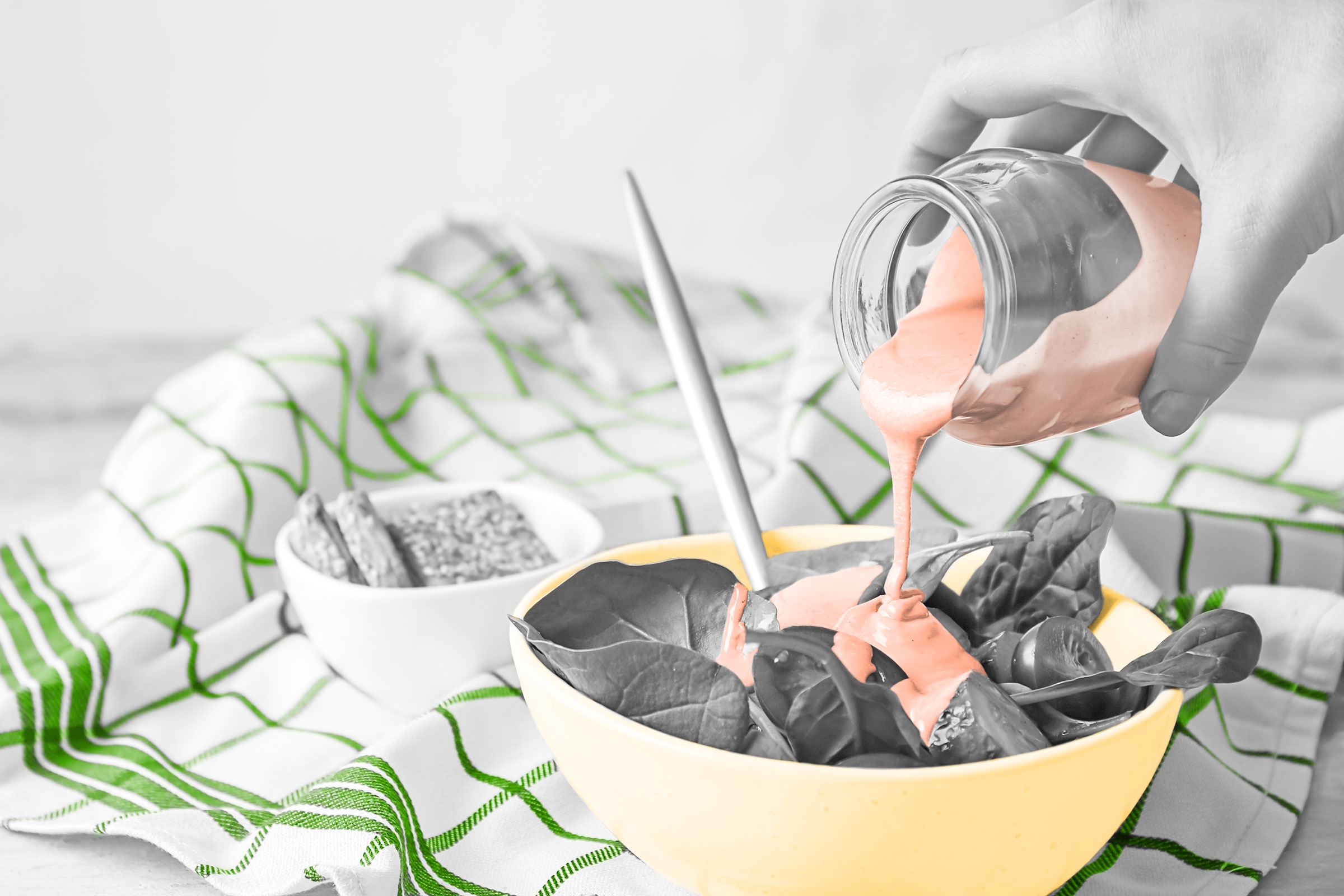

Fries without ketchup, pancakes without syrup — what would your favorite dishes be like without a little sauce? Condiments can make or break a meal; the word, after all, comes from the Latin condimentum, meaning “to season.” Take a moment to appreciate all the taste bud sensations that sidekick sauces can provide with these eight facts.
Soy Sauce Was Originally Made From Meat

The soy sauce you find at grocery stores today typically contains just four simple ingredients — soybeans, wheat, salt, and water — which are blended and fermented over several months or years to give the sauce its umami flavor. However, the oldest known types of soy sauce used meat in place of legumes. Called jiang, the flavoring was a thick and pasty blend of meat, a fermenting agent made from millet, and salt that fermented for about 100 days; it was ready when the meat had entirely dissolved. Food historians believe Chinese soy sauce makers eventually ditched using meat and switched to soybeans about 2,000 years ago.
Mayo Became Popular After a French and British Battle

The origins of mayonnaise are heavily debated among food historians, particularly regarding the issue of whether the creamy spread was invented by the Spanish or the French. One commonly told tale dates back to 1756 during the Seven Years’ War, when French forces set siege to Minorca’s Port Mahon (then ruled by the British). After the battle, a French chef working for the invading forces reportedly blended egg and oil together in a celebratory meal, calling the finished product “mahonnaise” for the region. However, some researchers believe residents of Port Mahon had already been making and using mayonnaise (their version was called Salsa Mahonesa). Regardless of who created it, mayo became linked with French cooking by the early 19th century, and the multipurpose dressing reached American menus by the 1830s.
White House Staff Kept Ketchup on Hand for One President’s Breakfast

Among White House staff, Richard Nixon’s love of cottage cheese was well known. During his time in the Oval Office, the 37th President regularly enjoyed a breakfast of fruit, wheat germ, coffee, and cottage cheese topped with ketchup. (His last meal in office nixed the condiment, but did include a tall glass of milk and cottage cheese atop pineapple slices.)
Nearly All American Shoppers Buy Peanut Butter

There’s one condiment you’ll have a good chance of finding in pantries across the country: peanut butter. In 2023, 90% of U.S. households included the smooth and creamy spread on their grocery lists. On average, Americans consumed 4.4 pounds of peanut butter per capita in 2023, a culinary craving that first became popular during World War I, when peanut butter was an inexpensive and easily accessible protein during wartime rationing.
Syrup-Producing Trees Have a Special Name

Making pure maple syrup is a time-intensive labor that starts inside of “sugarbushes,” aka groves of maple trees. Syrup farmers can wait up to 40 years before a maple tree grows large enough to be tapped, and even when they are, the trees typically produce just 10 gallons of sap per tap hole per season. After boiling off excess water, that’s enough to make about 1 quart of maple syrup.
There’s a Hot Sauce-Themed Opera

Not many foods are the stars of an opera performance, though one kind of hot sauce is. Boston composer George Whitefield Chadwick debuted Tabasco: A Burlesque Opera in 1894. It tells the story of an Irish traveler lost at sea who washes ashore in Morocco and works as a chef, and who creates spicy dishes (his secret ingredient: Tabasco). Chadwick’s opera was partially financed by the McIlhenny Company — the maker of Tabasco. In its first week, it turned a profit of $26,000.
Ernest Hemingway’s Burger Recipe Used Tons of Condiments

One of Ernest Hemingway’s lesser-known creations wasn’t a novel, but a hamburger. His recipe included a smattering of condiments inside the mixture rather than on top. The author’s technique called for wine, garlic, and sometimes ground almonds, but also several different spice blends and relishes. His recommendation for getting the meat perfectly ready for the grill? Let it “sit out of the icebox for 10 to 15 minutes while you set the table and make the salad.”
Historians Have Recreated a 2,000-Year-Old Condiment

You can get a taste for how ancient Romans and Greeks once ate with a little dash of garum, a fish sauce that was popular about 2,000 years ago. Historians relied on surviving recipes for instructions that included steps like leaving fish to break down in open containers for three months. However, it wasn’t until clay pots from a garum-making shop in Pompeii were unearthed that researchers found evidence of the sauce that could be analyzed for additional ingredients such as dill, fennel, and coriander that help the salty and umami-flavored sauce shine.
